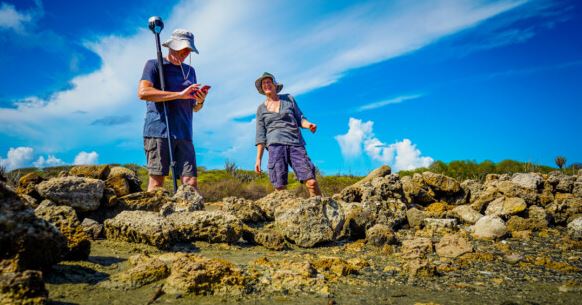WILLEMSTAD – New research shows that Curaçao was inhabited much earlier than previously believed. Excavations at a site near a rock formation at Salina Sint Marie have yielded radiocarbon dating that pushes the earliest habitation of the island back to approximately 5735 to 5600 years ago. This is at least 290 to 850 years earlier than the previously accepted timeline of the island’s settlement. This discovery makes the site the oldest known archaeological site in Curaçao and one of the oldest in the Caribbean islands.
This finding significantly changes the understanding of the early inhabitants of the Caribbean islands. It was previously thought that Curaçao was settled only around 5300 to 4900 years ago. However, the new data suggest that the first people settled on the island much earlier than previously assumed. These early inhabitants, likely hunters and gatherers, probably came from the northwest of Venezuela, drawn by the island’s rich maritime environment.
The dating of this site also points to earlier maritime exploration than previously believed. The inhabitants of Curaçao would have had to make an open water crossing from the mainland of South America, suggesting that these people already possessed the necessary skills and technology for such journeys at an early stage. This offers new insights into how the Caribbean islands were first colonized.
The advancement of Curaçao’s habitation timeline has significant implications for understanding migration patterns in the region. It demonstrates that people spread across the Caribbean earlier than previously thought and may suggest early networks of contact and exchange between the islands and the mainland. Furthermore, it helps to better map the cultural and social interactions of these early communities, which is important for our knowledge of the region’s prehistory.
Curaçao itself is about 140 million years old and has various geological layers, including basalt and deep-sea deposits. These layers were formed during the slow movement of Curaçao from the area now known as the Galapagos Islands to its current position near Panama. Additionally, there are limestone formations, such as Tafelberg and Ronde Klip, which were deposited during the most recent geological period.
Source link : http://www.bing.com/news/apiclick.aspx?ref=FexRss&aid=&tid=6717b752be6a4cf39a24fe68fb92d788&url=https%3A%2F%2Fwww.curacaochronicle.com%2Fpost%2Flocal%2Fnew-discovery-curacao-inhabited-much-earlier-than-previously-thought%2F&c=1500692336109649382&mkt=en-us
Author :
Publish date : 2024-10-22 01:49:00
Copyright for syndicated content belongs to the linked Source.
